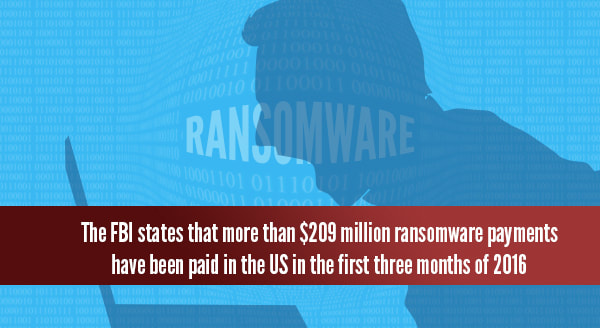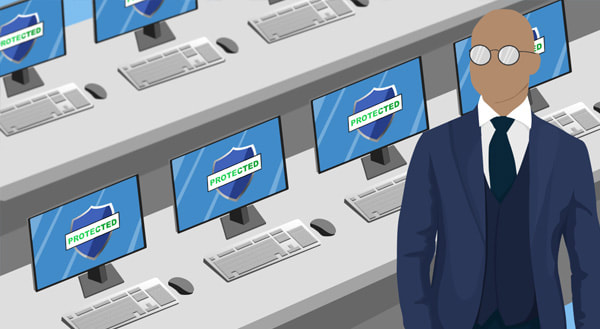|
People happily share their private information online, building robust libraries that can easily become a one-stop goldmine for fraudsters. It’s not exactly the intention everyone has when they sign up, as the whole point of Facebook is to share your life with your friends. It hooks us into a global community and the experience does depend on us making certain privacy sacrifices.
So how do you balance being social with staying safe? On Facebook alone, the average person shares 13 pieces of personal information ranging from a fairly innocent name/email combo, all the way to mothers maiden name and home address. It doesn’t sound like a lot, but those 13 pieces have the power to unravel your life within minutes. Even checking in at home or a favorite location has become the norm, helping to create a multi-dimensional online identity. The details are available to anyone who cares to look, whether they’re a friend keeping in the loop, or someone with a much darker agenda. The problem is, you just don’t know who’s looking at your profile or why. For example, someone could try accessing your email account by clicking the ‘Forgot password’ link. The email service follows its security rules and asks identifying questions like ‘which high school did you go to? What is your pet’s name?’ Unfortunately, the most common identifying checks and answers are probably available on Facebook. Once your email address is compromised, hackers can use that to break into other services and go through, clicking ‘Reset Password’ on site after site, account after account – they have full access to your email, so there’s nothing stopping them from emptying your bank accounts – or worse. 7 Ways To Secure Your Facebook Without Missing Out on the Fun
“Downtime costs money.” That’s no secret, but it doesn’t quite capture the whole experience…you arrive to work in the morning, grab your coffee knowing you’ve got a hectic day ahead, and are ready to dive in. For some reason your computer can’t access the database and neither can anyone else’s. You restart the server while fielding calls left, right and center, but are unable to answer any client queries. Your hands are completely tied…and now the server is beeping furiously…what’s going on??! You’re not just in crisis mode, you’re on damage control as you call every tech you can think of, trying to find one who can come NOW.
Not exactly the day you had planned. The Break/Fix Days Are Gone Previously, businesses only addressed their IT needs when something broke. A few hours down meant little in the scope of things. In today’s fast world, businesses rely heavily on IT and downtime just isn’t an option. Even the legalities of simply restoring financial, legal or medical files after a breach raises issues. The cost of break/fix is now too high, both financially and emotionally. Simply put, your IT services are remotely monitored and proactively managed by a professional, external business. Your Managed Service Provider (MSP) runs regular diagnostics on equipment to identify impending failure and resolves problems before they happen. Benefits of Managed Services Small to medium businesses in particular benefit from managed services, because they don’t usually have an on-site technician to oversee the multiple systems in use. By subscribing to a managed service provider, businesses can have reduced labor costs, access to a knowledge base, future-pacing, better data security and reduced downtime. Businesses can also know exactly what their upcoming costs are and plan accordingly. Some of the managed services we can provide are: Remote support – This allows us to help you quickly without needing to be on-site. Hardware monitoring – We monitor your servers and workstations to catch hardware failures before they happen. Managed anti-virus – We make sure your anti-virus is up to date and take immediate action if an infection occurs. Patch management – We make sure your computer’s operating system is up to date, closing access to known vulnerabilities as soon as possible. How much down time can your business afford? Give us a call at 262-515-9499. More and more businesses and organizations are getting stung by ransomware demands. Hospitals, schools, social networks…some days it seems like an epidemic that leaps around arbitrarily, and hackers are raking in millions. Tallied across the word…billions. Ransomware attacks are devious in their simplicity. A user in the target business is tricked into opening a file, usually through a phishing email or download. The file contains malware which instantly encrypts your data and demands money in exchange for the password.
No payment = no password = no data. All of the target businesses should have backups, which they could simply revert to without paying any money, but the FBI reports more than $209 million was sent to hackers in the first quarter of this year alone. Keep in mind, this was just payments within the US, and only counts those who came forward. Last year it was only $25 million. Aren’t backups helping? Sometimes the backup solution fails and the data can’t be retrieved. This is particularly true in cases where the solution has been in use for years and something failed along the way. In other instances, the target business has a backup that can be restored, but it doesn’t include everything they need for full recovery. Finally, and the most common reason so many businesses are forced to pay the ransom: the ransomware attack affects the entire system – including attached and synchronized backups. If the backup is also caught in the ransomware encryption, it becomes useless as a recovery method and the only options are to pay or lose the data forever. Each day spent trying to recover the data is a drain on valuable business resources and in many cases, results in massive revenue loss. The only defense is to block the malware before it can infect the first workstation, and then continue the protection with a comprehensive backup strategy for all workstations and servers. Give us a call to discuss how we can help secure your business against ransomware today. 262-515-9499 Your computer is down for the count. You’ve tried the perennial favorite – turning it off and back on again – but somehow, your tech magic has not worked this time! You need help, and you want it fast. The question is whether to take it to a local computer business or big-box store for repair. Many big-box stores offer depot computer repair. Why are we calling it depot repair? Because just like at a bus or train depot, that store is only one stop on your computer’s repair journey. Typically, the store does not have the facilities to repair your laptop or desktop on-site. Also, their employees lack the skills to do the work right there.
Instead, that computer, along with all your important files, is shipped on to another location. This presents some problems:
That’s why we recommend getting your computers repaired at a local business with the skills and facilities to do the work on-site. Benefits of Small Business RepairWhen you take your device to a locally owned small business, you know at all times who is handling your computer. You often hand over your laptop or desktop to the person fixing it, or at least to someone who is in direct contact with the person doing the repair. Fewer people are going to have their hands on your device. You’re not dropping it off at one location to travel to another location via a major shipping company’s trucks, which means there’s greater accountability. Another advantage is that should something come up while your computer is in for repair, you could actually get to your device, because it’s not on a loading dock or in some pile of laptops in a manufacturer’s centralized computer repair shop. You can simply take your thumb drive down the road and ask to power the computer on and retrieve what you need, assuming that the device still turns on, that is. Selecting the Small Business for Your Repair When selecting a local computer business to do the repair, do your research first. It’s a good idea to ask about the following:
Some local computer experts will be able to fix your problems without you needing to go to them. Depending on the issue, they may be able to resolve the situation using remote access software, or they could be willing to come to you. If you’re looking for a partner with a proven track record of giving quality computer service, contact us today! 262-515-9499 Companies that suffer security breaches nearly always have one of these IT security problems. Is your company guilty of any of them? No Backups
A shocking number of businesses are not backing up their data properly. According to market research company Clutch, 60 percent of businesses who suffer a data loss shut down within six months. Not only should every business be fully backing up their data, but their backups should be regularly tested to work too. It's a step that businesses miss surprisingly often. Many businesses don't find out that their backup can't be used until it's already too late. Reactive and not proactive The world is constantly changing. The IT world doubly so. Attackers are always figuring out new ways to break into businesses, hardware evolves faster than most can keep up, and old systems fail due to wear and tear far quicker than we would like. A huge number of businesses wait until these issues impact them directly before they respond. The result is higher costs, longer downtime, and harder hitting impacts. By responding to hardware warnings before it fails, fixing security holes before they're exploited, and upgrading systems before they are out of date: IT can be done the right way. Being proactive about your IT needs means systems don't have to break or compromised before they are fixed. The result for your business is less downtime, fewer losses, and lower IT costs. Weak Passwords A surprising number of people will use the password "password" to secure some of their most important accounts. Even more still will write their own password on a post-it note next to their computer. In some cases, many will even use no password at all. Strong passwords act, not only as a barrier to prevent unwanted entry, but as a vital accountability tool too. When system changes are made it's often essential that the account that made changes is secured to the right person. With an insecure password or worse; none at all, tracking the individual responsible for reports or accountability becomes impossible. This can result in both auditing disasters on top of technical ones. Insufficient Staff Training Humans in the system are commonly the weakest point in IT security. Great IT security can be a bit like having state-of-the-art locks on a door propped open with a milk crate. If staff aren't trained to use the lock, it's worth nothing at all. Often times businesses can justify spending big on security for the latest and greatest IT defenses. The very same firms may exceed their budget and spend almost zero on training staff to use them. In this instance, a little goes a long way. Security training can help staff to identify a threat where it takes place, avoiding and mitigating damage, often completely. Weak Data Controls Some companies can take an ad-hoc, fast and loose approach to storing professional data. Often crucial parts can be spread across many devices, copied needlessly, and sometimes even left unsecured. Client data can be found regularly on employee laptops, mobile phones, and tablet devices. These are famously prone to being misplaced or stolen out in the field along with vital client and security data. It can be easy for both employees and firms to focus on the costs of devices and hardware purchased for the business. The reality is that the data held on devices is almost always worth many times more than the device that holds it. For many firms, their approach to data hasn't been changed since the firm was first founded. Critical data is often held on single machines that haven't been updated precisely because they hold critical data. Such machines are clearly vulnerable, outdated, and prone to failure. Common problems with simple solutions Each of these common issues have simple solutions to secure against IT failure. With a professional eye and expertise in the field, every business should be defended against IT issues that risk the firm. If you need help securing your IT to protect your business, give us a call at 262-515-9499. Anti-virus programs don’t catch viruses when they’re not running. Yes, it’s blatantly obvious, but what’s not always clear is how often your staff are disabling your anti-virus programs so they can squeeze in a little playtime. Maybe download and install a game, free app or get through the block to a suspicious website. It happens in businesses across the country, and more often than you think. It’s just human nature to see a problem and work around it, because surely their computer won’t be infected, those things only happen to other people. Unfortunately, the biggest threat to your data and network security is your staff. Fantastic, loyal, hardworking people, who make occasional silly decisions. Even the innocent ones, like ignoring the virus software update that keeps popping up, requesting to download the latest protections. Your staff aren’t intentionally putting your systems at risk, but they are creating a weak link that exposes your business to attacks that may cost you thousands.
That’s the key difference between free anti-virus and managed anti-virus. Free solutions were created for home use, where self-induced breaches aren’t such a big deal. The license on free solutions is usually in fact only for home usage. This is because in a business setting, even the slightest gap in your digital walls can lead to lost revenue, delays and even lawsuits. With a managed anti-virus solution, your staff can’t do those things. They literally can’t disable the protections or uninstall it, and updates happen automatically. With the benefit of human oversight, we’re able to see when machines aren’t fully protected or have already become infected. Managed anti-virus means just that – we manage it for you – so that we know when there’s an issue and can take the necessary actions. Often working invisibly to your employees, we can remotely fix small problems before they become big problems, which leaves your employees feeling trusted while your business remains secure. Managed anti-virus gives your business protection on a much higher level, because let’s face it, the stakes are much bigger. It takes software control out of the end users hands and puts your system security in the hands of an expert. The program can’t be disabled without a password, nor can it be uninstalled by anyone without the highest permissions. When updates are released they are downloaded and applied automatically. No delays, no putting it off until later, no gaps in your digital walls. When to switch: This is around the size where it becomes impossible to monitor each computer individually without a full-time IT technician on your team. Users may be spread out across the network and you’re way too busy to stand watch over them while they work. For a very small fee per computer each month, all the costly stress and drama of defending your business network against the latest attack simply goes away. It’s all managed centrally by a company such as ours, so you can get on with doing what you do best – running a profitable business. Find out how affordable managed anti-virus really is, call us today at 262-515-9499 |
Tech Force BlogWe provide you with important, practical tips and insight for your technology and networks for both home and business. Archives
March 2024
Categories
All
|
Get in touch with us! |
See what our clients have to say...
Very pleased with Tech Force! We've been using Tech Force for over four years now. We've had a lot of different people do computer and IT stuff for us, but Tech Force is the first to come in and implement a plan. The plan was executed and we've had no problems. |
More Client Reviews
Read Our Customer Reviews |
We service Racine, Mount Pleasant, Sturtevant, Wind Point, Union Grove, Elmwood Park, Franksville, Caledonia, Kenosha, Somers, Pleasant Prairie, Bristol, Parkside, Oak Creek and Franklin, WI and surrounding areas. Copyright © 2009-2024 Tech Force Computer Service, LLC.






 RSS Feed
RSS Feed
